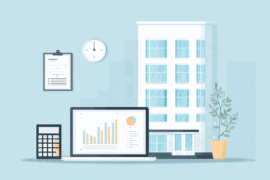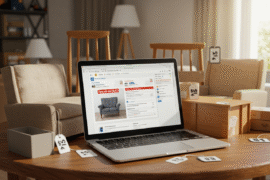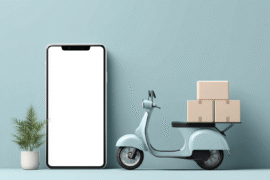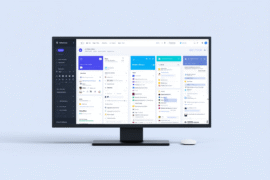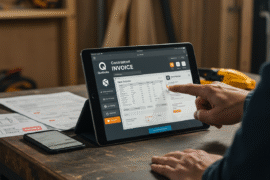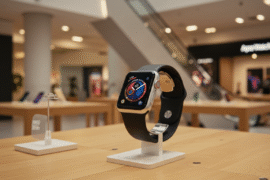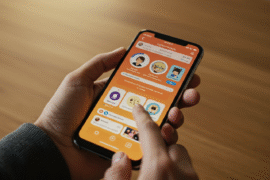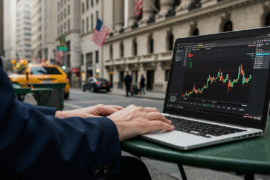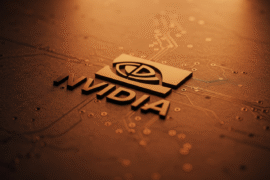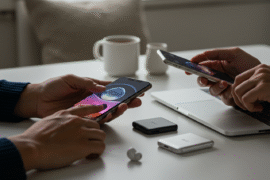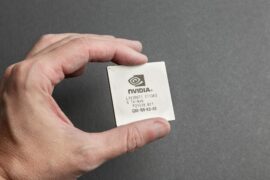This article may contain references to products or services from one or more of our advertisers or partners. We may receive compensation when you click on links to those products or services. Nonetheless, our opinions are our own.
The information presented in this article is accurate to the best of our knowledge at the time of publication. However, information is subject to change, and no guarantees are made about the continued accuracy or completeness of this content after its publication date.
Highlights
- Medical alert systems give quick help in emergencies using help buttons, wearable devices, and base units.
- They come in different types, like in-home systems, mobile systems, and special devices with features such as fall detection and GPS tracking.
- These systems support independence for older adults and offer peace of mind with dependable emergency response services.
- Some insurance plans, such as Medicare Advantage and Flexible Spending Accounts, might help pay for these systems.
- Setting them up correctly, taking care of them, and testing them regularly are important for a quick response in emergencies.
Introduction
Medical alert systems help people, especially older ones, get emergency support with just a button press. There are several types to choose from, allowing users to pick what fits their life best. Features like fall detection and GPS tracking improve safety and ease of use. These systems give comfort to seniors, families, and caregivers while promoting more independence in daily activities.
Medical Alert Systems
Medical alert systems are safety tools that help users connect to trained experts or caregivers during emergencies. These systems are made to react quickly to medical issues or accidents. They usually include wearable devices, base stations, and mobile units. You can use them at home or when you’re out.
For older adults, these devices help them live on their own. They also give family members peace of mind, knowing that help is always available. Knowing how these devices work helps users make beneficial choices.
Definition and Basic Functionality
At their core, medical alert systems offer quick access to emergency help. Most of these systems have a help button. You can wear this button or attach it to a wall. When someone presses it, the button sends a signal to a monitoring center or a contact that can call for help.
Systems are in two groups: monitored and non-monitored. Monitored systems link to experts who send emergency responders. Non-monitored systems let family or caregivers know directly. These systems work over landlines, cell networks, or GPS to keep connections strong.
Advanced systems can have features like automatic fall detection. This feature sends an alert without needing to press a button. You can wear this system as a pendant or set it up in your home. These systems aim to give quick and beneficial help during emergencies.
Importance of Medical Alert Systems in Daily Life
Medical alert systems are vital. They allow users to get help right away, which is especially helpful for older people who live alone. These systems let users call emergency services fast. This support makes them feel safe and independent.
These devices help lower stress for users and their families. They mix health support with helpful features, like detecting falls and having a wide communication range. Besides handling emergencies, they give daily comfort and support for long-term health.
Types of Medical Alert Systems
Medical alert systems cater to diverse lifestyles. They work for people at home and for those who are often active and on the go.
In-Home Systems
People who spend most of their time indoors are the target audience for in-home medical alert systems. These systems usually have a base station that connects to help buttons you can wear or mount on walls. You can place these devices in risky spots like bathrooms or hallways.
In-home systems work through landline or cell connections. They allow two-way talk with monitoring centers. Wearable items, such as waterproof pendants, make it easy to use them in places like showers.
Brands like Bay Alarm Medical give choices such as support in different languages and monitoring for spouses. Accessories like lockboxes and temperature sensors add more usefulness. For big homes, companies like Medical Guardian offer systems with a wider coverage area.
Mobile Systems
Mobile medical alert systems are ideal for people who are active and spend time outdoors. These systems usually have wearables that come with GPS, cell phone connections, and emergency help features.
These devices are easy to carry. They help users feel safe while shopping, traveling, or having fun outdoors. The GPS feature helps track locations well. This allows monitoring centers to send help quickly. Brands like Medical Alert and LifeFone also have smartphone apps to use with them.
Mobile systems usually have automatic fall detection. They often come in wearable forms like pendants or belt clips.
Specialized Systems for Specific Needs
Certain medical alert systems cater to specific health or lifestyle requirements. Fall detection models have sensors that can find falls. They send out alerts automatically, even if the help button isn’t pressed.
Advanced systems keep track of important signs, how much you move, and your sleep habits. Companies like Aloe Care Health provide extra sensors that check air quality and temperature. These tools help caregivers handle health issues in a more complete way.
Wearable smartwatches can have step counters and automatic alerts. Companies like Medical Guardian offer options in different languages. This makes the systems easier to use.
Beginner’s Guide for Picking a Medical Alert System
Choosing the right medical alert system begins with looking at your health needs, daily habits, and what kind of device you prefer. If you are thinking about a system for your home or a mobile one, make sure to check insurance choices, features you want, and your budget.
Think about systems that have fall detection, GPS, and excellent customer support. Check activation fees, how well they work with Health Savings Accounts (HSAs) or Spending Accounts (FSAs), and how easy they are to use.
Assessing Your Needs and Lifestyle
Start by knowing how you move and your health issues. If you mostly stay at home, a system you can use there might be enough. If you are active outside, a mobile device with GPS may be a better choice.
Features like fall detection are needed for people who might fall. If you have an HSA or FSA, you might be able to use pre-tax money to buy it.
Seek companies like MobileHelp or Medical Guardian. They give positive support for customers and send alerts for caregivers.
What Equipment Is Needed?
Basic systems usually have a base station and a wearable device, like a wristband. Some might also have other parts, like buttons on the wall or motion sensors, depending on the provider.
Make sure the system connects through a landline, cell phone, or Wi-Fi. This feature helps keep in touch during emergencies.
Voted "Best Overall Budgeting App" by Forbes and WSJ
Monarch Money helps you budget, track spending, set goals, and plan your financial future—all in one app.
Get 50% OFF your first year with code MONARCHVIP
Guide to Getting Started
Step 1: Evaluate Your Health and Mobility
Identify any situations that may need urgent care, like heart issues, trouble moving, or a history of falling. This check will help decide if features like fall detection or GPS are needed. Talk to your healthcare provider if you have questions.
Step 2: Research and Select a System
I will compare systems by looking at monitoring services, how long the devices last, and features like GPS or two-way voice calls. It’s also important to have excellent customer support and a long-lasting battery. Please consider reviewing customer feedback and the company’s reputation prior to making a purchase.
Step 3: Installation and Setup
Most systems are easy to set up and do not need many technical skills. You just plug in the base unit, connect it to a landline or cell service, and pair it with the device you wear.
Please ensure that the contact details for emergency services and caregivers are kept up to date if you have a monitored system.
Step 4: Test the System Regularly
Regular testing makes sure the system works well. Press the help button to see if you can connect to the monitoring center. Please check the battery levels and replace any parts if necessary. It is beneficial to do monthly tests for your peace of mind and to feel comfortable using it.
Features to Consider
- GPS Capability: Offers a clear location for emergency helpers.
- Fall Detection: Sends alerts when a fall happens.
- Two-Way Voice Communication: Lets users talk straight with emergency workers.
- Battery Life: Look for rechargeable batteries that last long and simple charging options.
Advantages of Medical Alert Systems
Enhanced Safety and Peace of Mind
Medical alert systems give immediate help in emergencies. This feature is important for safety. They are always ready to use. This support allows people to live on their own. It also helps to reduce worry for the users and their families.
Independence for Older Adults and People with Disabilities
With features like fall detection and simple communication, these systems help users feel in control of their daily routines. This leads to more independence and reliable support when needed.
Immediate Access to Emergency Assistance
Pressing a button links the user to a monitoring center. This center has experts who can contact first responders or caregivers. A quick response can really help in medical emergencies.
Cost Considerations
Comparison of Pricing Models
You can purchase medical alert systems with a service or as a one-time payment. Subscription services usually offer monitoring, care, and updates. A one-time purchase costs more upfront but may not have ongoing fees.
Check what each plan has. Look for features like fall detection or alerts for caregivers. These indicators will help you figure out the overall value.
Subscription Services vs. One-Time Purchase
Subscription plans give you continuous help and support. They usually come with monitoring, too. One-time purchases let you own a device. This option might fit users who want to spend less in the long run. Think about your budget, what help you expect, and how you will use it before making a choice.
Potential Insurance Coverage
While Original Medicare typically does not cover medical alert systems, certain Medicare Advantage plans might provide coverage for them. You can also use FSAs and HSAs to lower costs. Talk to your insurance provider to learn about coverage details and any reimbursement.
Installation and Maintenance
DIY vs. Professional Installation
DIY setups are usually simple and affordable. Getting a professional to install it helps set things up correctly, especially for those who might find the tech steps hard. Pick the choice that fits your comfort level and the complexity of your system.
Routine Maintenance Tips
Keep your devices clean and check the batteries often. Every month, conduct a test on the system to ensure its connectivity and responsiveness. Look over the user manual for help with problems and update your emergency contact information when needed.
Real-Life Stories and Testimonials
Many users feel safer and more independent after they set up a medical alert system. For example, one older person fell while gardening. They got quick help because of the alert device.
These stories show how these systems help people in real life. They improve life and lessen the worry of being alone in a crisis.
How These Systems Have Saved Lives
A quick way to reach emergency services can save lives. Many people have shared how quick alerts gave them faster medical care. In urgent times, having good access to help is critical.
Feedback from Long-Term Users
Long-term users point out that the system is reliable and easy to use. They say they enjoy two-way communication, a long battery life, and helpful monitoring services.
Conclusion
Medical alert systems improve safety and independence. They offer quick help during emergencies. There are many types to choose from, including ones for home and ones that are mobile. Users can pick a system that works best for them. Important features like fall detection and GPS give extra help.
Insurance choices like Medicare Advantage and FSAs can lower costs. In general, these options connect users with emergency help. They provide peace of mind and improve overall quality of life.
Frequently Asked Questions
What is the best medical alert system for seniors who live alone?
The best system has dependable monitoring, GPS tracking, fall detection, and easy two-way chatting. Pick a device that lasts a long time and has a favorable reputation for help.
Can medical alert systems detect falls accurately?
Yes. Systems that detect falls use special sensors. These sensors tell the difference between normal movement and real falls. They send out alerts quickly when needed.
How do medical alert systems work with smartphones?
Many systems link to smartphones using apps. Such connectivity allows for real-time alerts and messages with caregivers. This help makes things easier and improves response times.

Reviewed and edited by Albert Fang.
See a typo or want to suggest an edit/revision to the content? Use the contact us form to provide feedback.
At FangWallet, we value editorial integrity and open collaboration in curating quality content for readers to enjoy. Much appreciated for the assist.
Did you like our article and find it insightful? We encourage sharing the article link with family and friends to benefit as well - better yet, sharing on social media. Thank you for the support! 🍉
Article Title: What Are the Different Types of Medical Alert Systems?
https://fangwallet.com/2025/05/22/different-types-of-medical-alert-systems/The FangWallet Promise
FangWallet is an editorially independent resource - founded on breaking down challenging financial concepts for anyone to understand since 2014. While we adhere to editorial integrity, note that this post may contain references to products from our partners.
The FangWallet promise is always to have your best interest in mind and be transparent and honest about the financial picture.
Become an Insider

Subscribe to get a free daily budget planner printable to help get your money on track!
Make passive money the right way. No spam.
Editorial Disclaimer: The editorial content on this page is not provided by any of the companies mentioned. The opinions expressed here are the author's alone.
The content of this website is for informational purposes only and does not represent investment advice, or an offer or solicitation to buy or sell any security, investment, or product. Investors are encouraged to do their own due diligence, and, if necessary, consult professional advising before making any investment decisions. Investing involves a high degree of risk, and financial losses may occur including the potential loss of principal.
Source Citation References:
+ Inspo
There are no additional citations or references to note for this article at this time.



